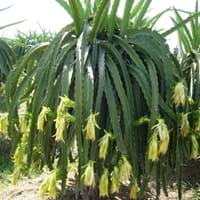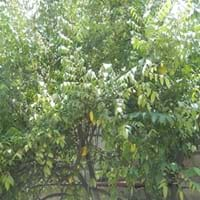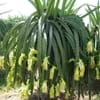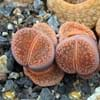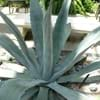Life Span
Perennial
Perennial
Origin
Caribbean, Central America
Southeastern Asia
Types
Hylocereus undatus, Hylocereus costaricensis, Hylocereus megalanthus
Not Available
Number of Varieties
Not Available
Habitat
Rocky areas, Terrestrial
Subtropical climates, Tropical regions
USDA Hardiness Zone
11-15
10-14
Sunset Zone
H1, H2, 21, 22, 23, 24
H1, H2, 22, 23, 24
Habit
Spreading
Arching/Fountain-shaped
Flower Color
White, Gold
Pink, Rose, Violet
Flower Color Modifier
Bicolor
Bicolor
Fruit Color
Red
Yellow, Orange, Light Yellow, Lemon yellow, Yellow green, Gold
Leaf Color in Spring
Not Available
Green
Leaf Color in Summer
Not Available
Green
Leaf Color in Fall
Not Available
Green
Leaf Color in Winter
Not Available
Light Green
Leaf Shape
Toothed
Oblovate
Plant Season
Summer, Fall
Spring, Summer, Fall
Sunlight
Full Sun
Full Sun, Partial Sun
Type of Soil
Loam, Sand
Loam, Sand
The pH of Soil
Acidic, Neutral, Alkaline
Acidic, Neutral
Soil Drainage
Well drained
Average
Bloom Time
Early Summer, Summer
Early Spring, Spring, Late Spring, Early Summer, Summer, Late Summer
Where to Plant?
Container, Ground, Pot
Ground
How to Plant?
Cuttings, reseeds, Stem Cutting
Seedlings, Stem Planting
Plant Maintenance
Medium
Low
Watering Requirements
Average Water Needs, Keep the Soil well drained
Average Water Needs, Requires watering in the growing season
In Summer
Lots of watering
Lots of watering
In Spring
Moderate
Moderate
In Winter
Average Water
Average Water
Soil pH
Acidic, Neutral, Alkaline
Acidic, Neutral
Soil Type
Loam, Sand
Loam, Sand
Soil Drainage Capacity
Well drained
Average
Sun Exposure
Full Sun
Full Sun, Partial Sun
Pruning
Remove damaged leaves, Remove dead branches, Remove dead leaves
Prune in winter, Remove damaged leaves, Remove dead leaves
Fertilizers
All-Purpose Liquid Fertilizer
Fertilize every year
Pests and Diseases
Red blotch
Red blotch
Plant Tolerance
Drought
Drought
Flower Petal Number
Semi-Double
Single
Foliage Texture
Bold
Medium
Foliage Sheen
Not Available
Glossy
Attracts
Not Available
Birds, Butterflies
Allergy
no allergic reactions
Kidney Stone
Aesthetic Uses
As decorated salad, Beautification
Not Used For Aesthetic Purpose
Beauty Benefits
Not Available
Not Available
Environmental Uses
Air purification
Air purification, Food for birds, Food for insects, Nesting sites for birds, Prevent Soil Erosion
Medicinal Uses
Antidiabetic, Appetite enhancer, increase memory, Weight loss
Anti-oxidant, Antioxidants, High blood pressure, Nutrients
Part of Plant Used
Fruits
Fruits, Seeds
Other Uses
Not Available
Oil is used in perfume, soaps, creams, etc., Used As Food, Used for its medicinal properties
Used As Indoor Plant
Yes
No
Used As Outdoor Plant
Yes
Yes
Garden Design
Container, Feature Plant, Houseplant, Rock Garden, Wall, Tropical
Edible, Fruit / Fruit Tree, Tropical
Botanical Name
HYLOCEREUS undatus
AVERRHOA carambola
Common Name
Pitahaya, Dragon fruit, Night blooming Cereus, Strawberry Pear, Belle of the Night, Cinderella Plant, Jesus in the Cradle
Carambola, Starfruit
In Hindi
Red Pitaya
carambola पेड़
In German
Drachenfrucht, Distelbirne
Sternfrucht Baum
In French
pitaya, fruit du dragon, cierge-lézard, poire de chardon
arbre carambole
In Spanish
pitahaya roja (Colombia, Mexico, Venezuela); flor de caliz, pitajava (Puerto Rico); junco, junco tapatio, pitahaya orejona, reina de la noche, tasajo (Mexico)
árbol de carambola
In Greek
Φρούτο του δράκου (fruto tu draku)
carambola δέντρο
In Portuguese
pitaia, cato-barse, cardo-ananaz, rainha da noite
árvore de carambola
In Polish
Red Pitaya
karambola drzewo
In Latin
Red Pitaya
carambola ligno
Phylum
Magnoliophyta
Tracheophyta
Class
Magnoliopsida
Magnoliopsida
Order
Caryophyllales
Oxalidales
Family
Cactaceae
Oxalidaceae
Genus
Hylocereus
Averrhoa
Clade
Angiosperms, Core eudicots, Eudicots
Angiosperms, Eudicots, Rosids
Tribe
Cacteae
Not Available
Subfamily
Cactoideae
Not Available
Number of Species
Not Available
Importance of Red Pitaya and Carambola
Want to have the most appropriate plant for your garden? You might want to know the importance of Red Pitaya and Carambola. Basically, these two plants vary in many aspects. Compare Red Pitaya and Carambola as they differ in many characteristics such as their life, care, benefits, facts, etc. Every gardener must at least have the slightest clue about the plants he wants to plant in his garden. Compare their benefits, which differ in many ways like facts and uses. The medicinal use of Red Pitaya is Antidiabetic, Appetite enhancer, increase memory and Weight loss whereas of Carambola is Anti-oxidant, Antioxidants, High blood pressure and Nutrients. Red Pitaya has beauty benefits as follows: Not Available while Carambola has beauty benefits as follows: Not Available.
Compare Facts of Red Pitaya vs Carambola
How to choose the best garden plant for your garden depending upon its facts? Here garden plant comparison will help you to solve this query. Compare the facts of Red Pitaya vs Carambola and know which one to choose. As garden plants have benefits and other uses, allergy is also a major drawback of plants for some people. Allergic reactions of Red Pitaya are no allergic reactions whereas of Carambola have Kidney Stone respectively. Having a fruit bearing plant in your garden can be a plus point of your garden. Red Pitaya has showy fruits and Carambola has showy fruits. Also Red Pitaya is not flowering and Carambola is not flowering . You can compare Red Pitaya and Carambola facts and facts of other plants too.
